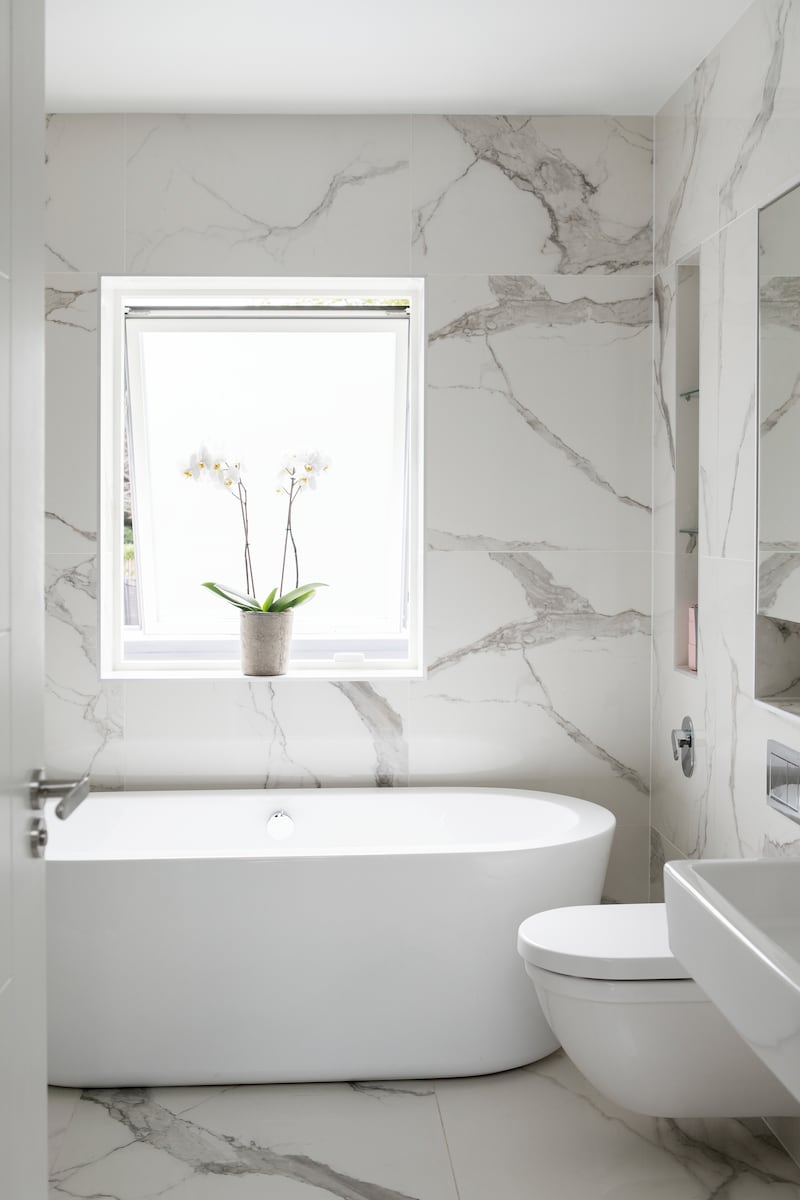At this time of year, many of us are feeling the effects of winter fatigue. The days are short, the nights are long and cold, and getting a good night’s sleep feels more important than ever. But for many, quality sleep remains elusive. While we often blame stress, screens or busy schedules, the design of your entire home – not just your bedroom – plays a bigger role in sleep quality than you might think. The good news is small design changes throughout your home can help you sleep better and wake up feeling more refreshed. Here’s how.
Natural light
Getting enough natural light, especially in the morning, is one of the best ways to support your circadian rhythm – the body’s natural sleep-wake cycle. Exposure to daylight early in the day helps regulate your internal clock, making it easier to feel awake in the morning and ready for sleep at night. So, finding ways to maximise the amount of natural light in the rooms where you spend your mornings can positively impact your sleep quality.
There are plenty of ways to bring more daylight into your home. If you’re planning on renovating, consider installing larger windows, skylights or glazed doors to help light flow between rooms. Modern window styles with slimmer frames and fewer obstructions tend to let in more light than heavily detailed traditional designs. Well-placed roof lights can brighten darker spaces, particularly in extensions where internal rooms may lack windows. Swapping solid doors for doors with glazed panels can help brighten rooms by letting light flow more easily between spaces.
Even if you’re not considering any building works, some small adjustments can make a big difference. Heavy curtains, pelmets and decorative blinds can block valuable daylight, making a room feel darker than it needs to be. Instead, opt for sheer or lightweight fabrics that let light in while still providing privacy. Keep window sills clear of bulky objects such as plants or ornaments, and keep curtains pulled back fully to allow as much daylight into the room as possible.
READ MORE
Artificial lighting
Artificial lighting has a greater impact on sleep quality than many realise. Warm, soft lighting in the evening signals to your body to wind down, while cooler, blue-toned light – from screens or bright overhead fixtures – tricks your brain into thinking it’s still daytime. This disrupts melatonin production, making it harder to fall and stay asleep.
To create a sleep-friendly environment, replace cool white bulbs with warm-toned ones, especially in bedrooms and living areas where you wind down before bed. Look for bulbs with a colour temperature of 2,700-3,000 Kelvin, which emit a soft, restful glow. This information is usually listed on the packaging, making it easy to choose the right lighting for better sleep.
Installing dimmer switches or investing in lamps with dimmer controls is another excellent idea. This way, you’ll be able to lower brightness levels and create a more soothing atmosphere in the evenings. If your fixtures don’t have dimmers, consider switching to smart bulbs, such as Philips Hue, which allow you to adjust brightness and colour temperature throughout the day.
[ Insomnia is no fun and I’ve tried everything. Even brown noiseOpens in new window ]
Soundproofing and noise reduction
Noise is a common sleep disrupter. Even the slightest disturbance can affect sleep quality. Whether it’s traffic sounds from outside or noise from within the home, reducing unwanted sounds is key to creating a peaceful sleep environment.
Simple changes can significantly reduce noise and create a calmer sleep environment. Adding thick rugs or carpets helps absorb sound, while heavy curtains or blinds block both light and outside noise. For even greater soundproofing, consider solid internal doors instead of hollow ones to minimise noise transfer between rooms.
If noise from outside your home is an issue, consider more permanent solutions such as replacing your windows. Upgrading from single to double glazing can significantly diminish unwanted sounds. In apartments, terraced or semidetached homes where noise from neighbours can cause disturbances, adding a layer of the soundboard to shared walls provides extra insulation, minimising sound transfer for a quieter, more restful sleep.

Temperature control
Temperature plays a crucial role in sleep quality, as your body naturally cools down in preparation for rest. An overly warm bedroom can interfere with this process, making it harder to fall into a deep, restorative sleep. Keeping the room slightly cooler and well-ventilated supports this natural rhythm, helping your body regulate its temperature more effectively. Installing thermostatic controls on radiators allows you to fine-tune the bedroom temperature, ensuring it stays at an optimal level for restful sleep.
Beyond maintaining a cool bedroom, you can further support your body’s natural sleep cycle by using heat to trigger the cooling process. A warm bath or sauna in the evening gently raises your body temperature, prompting a gradual drop afterward – one of the key signals that it’s time for sleep. If you’re renovating, consider keeping or adding a bath as it provides an easy and effective way to unwind before bed.
For those looking to elevate relaxation, home saunas are now more accessible than ever, with off-the-shelf options becoming increasingly affordable. Adding one to your home provides a luxurious yet practical way to ease muscle tension, reduce stress and promote deeper sleep. Whether it’s a sauna session or a soothing bath, designing a space that supports your body’s natural sleep cycle can make a noticeable difference in achieving more restful nights.

















